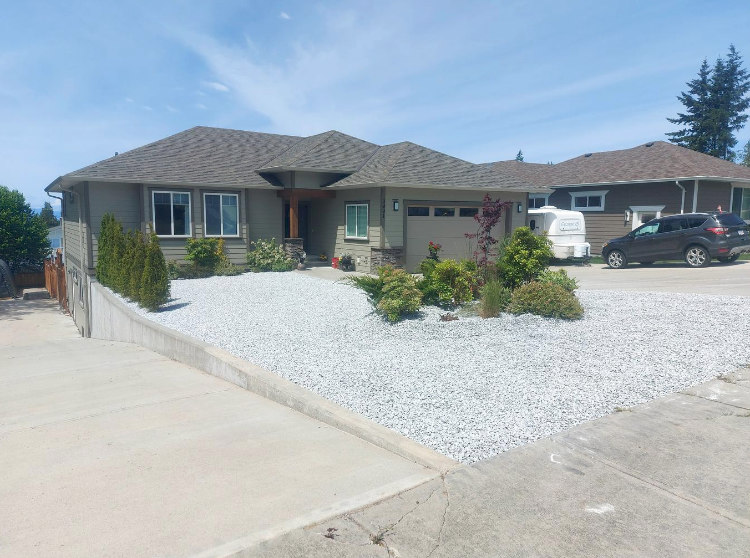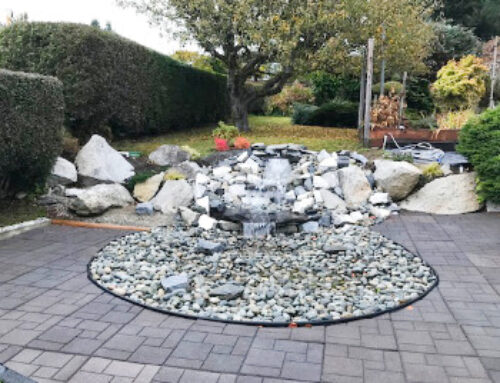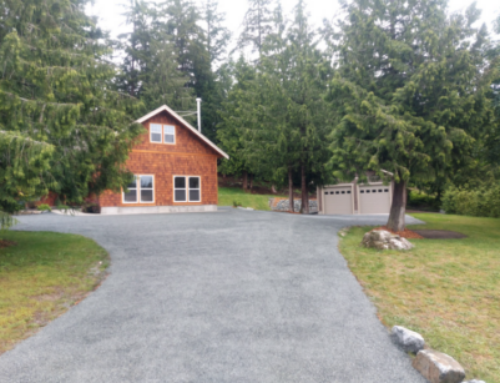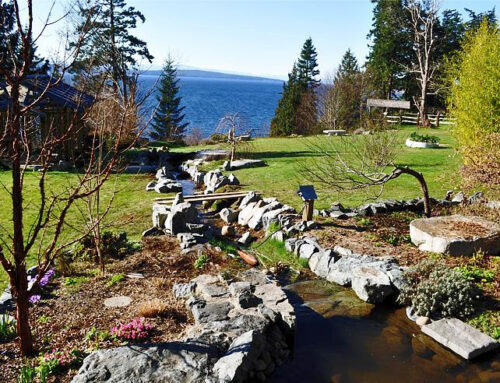Water mitigation and mud control

BC has had a spectacular 2022 Fall season, with warmer temperatures and lower rainfall than past years. But now is the time to think about water mitigation and mud control for both commercial and residential property. Kyle Robert, Quarry Manager for T&R tells us, “We need to consider that with the drought conditions we’ve had this year (summer of 2022), it’s going to take a few good rains before the ground starts to absorbs water.”
Proper water drainage prevents excess water build up
One way to mitigate water and reduce mud is to deal with any water issues. You want to increase the drainage on your property if:
- You have a non absorbent soil type;
- The property slopes or is at the base of a hill;
- Water is getting into your basement;
- You have a problem with surface water, such as a soggy lawn, or a driveway that washes out;
- You’re building a retaining wall on a hillside.
Drainage solutions
- Add extra drainage – adding drains or small run-off ditches will help funnel the water where it accumulates.
- Install a catch basin, a drainage solution for landscaping systems. This item typically contains a grate with a pipe used to drain excess water through and away from the area.
- Build a French drain. This type of drain provides an easy channel for water to flow through. Water runs into a gravel-filled trench, then into perforated pipe at the bottom of the trench. Check out this video on how to install a French drain: https://www.homedepot.com
- Add a gravel walkway. To help water run off, consider building gravel walkways next to vegetation that requires extra watering, such as vegetable gardens. There are many attractive gravel choices such as 3/4″ Salt and Pepper Rock and 3/4″ Clear Granite. Pea Gravel is also a good choice as it’s easy to walk on.
- Create a rock garden. A rock garden can not only help with drainage but can provide a lovely space to sit and add a visually appealing feature to your yard.
How to control mud
One of the first things is to try to remove any excess water. A good way to do this is to get a Hydrovac truck to come and clean up the excess water and clean out any drains. Leaving a path muddy coming into fall and winter will exasperate the problem. Driving or even walking on muddy paths will wear it down, create troughs for more water, and possibly ice, to form which can be a hazard.
If you have any soil based paths or driveways, the most common approach to firming up a muddy road is to add gravel. The practical way to treat a mudhole is to add enough course aggregate to fill the entire hole. The type of aggregate should be pourous and can contain a variety of materials. Do not use sand or gravel as this will not mitigate the issues and could cause more problems.
Depending on the extent of the mud problem, you may require a longer term solution. Connect with one of our Landscaping specialists to take a look at the problem and help you develop an affordable custom solution.






